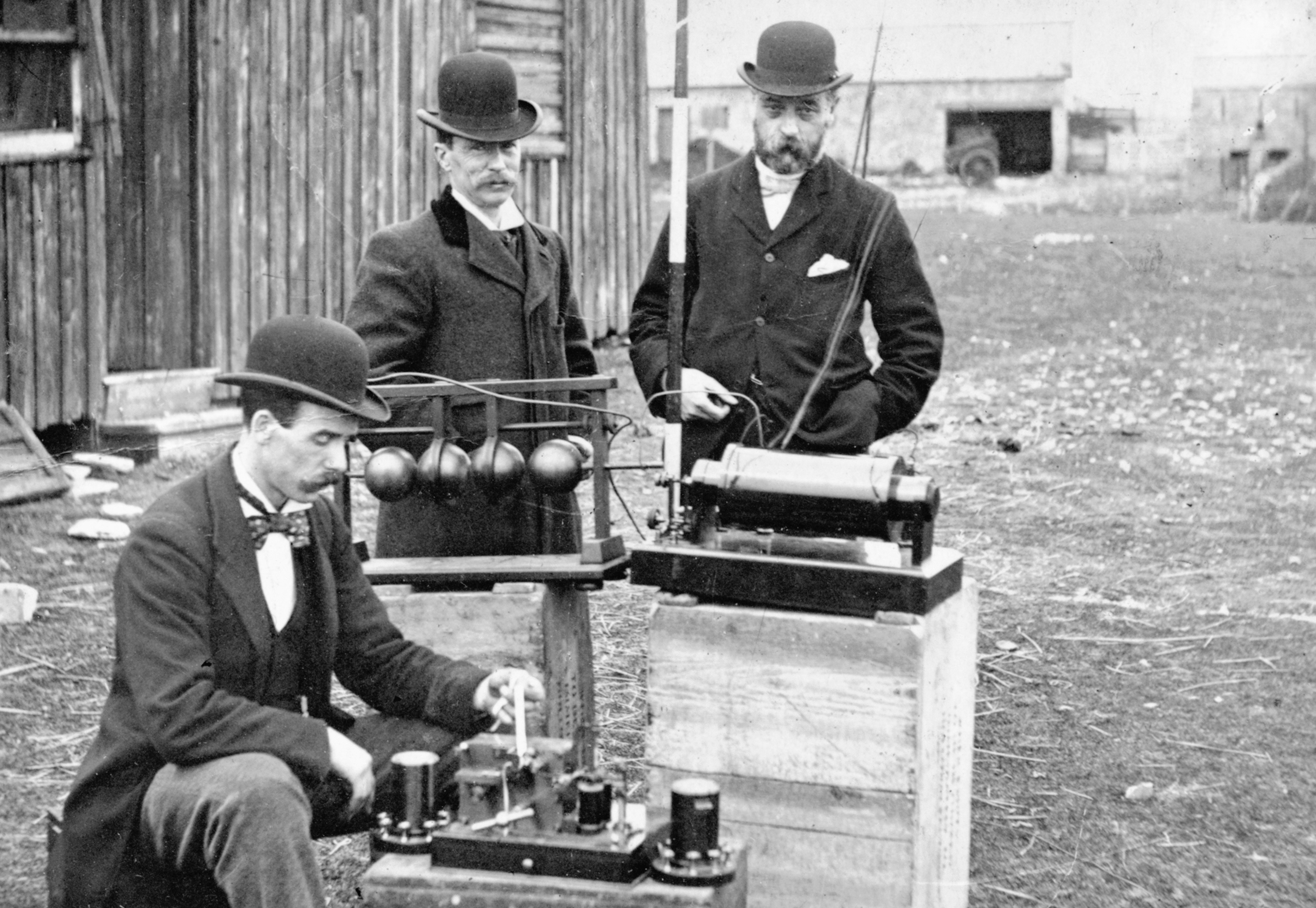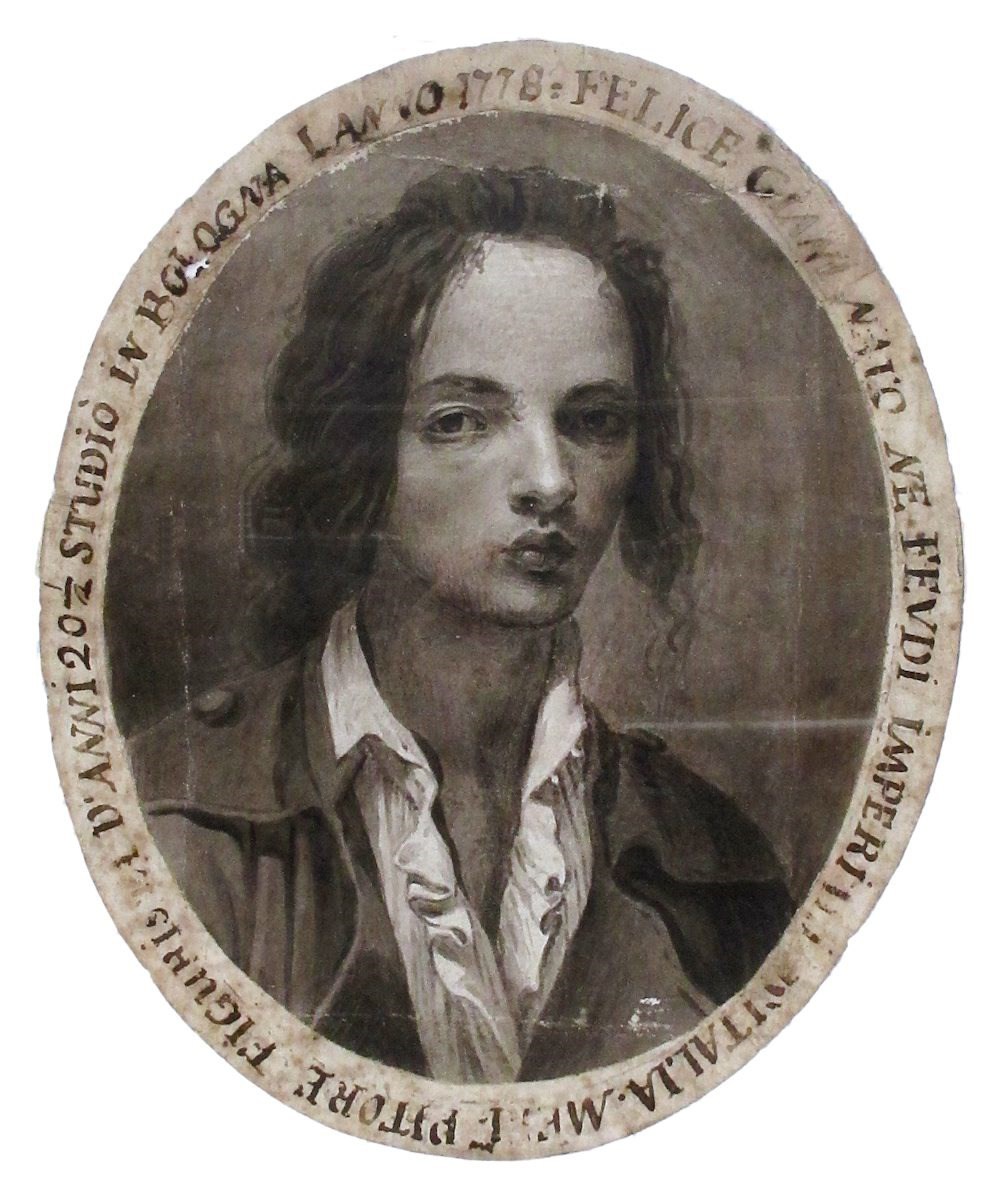|
Palazzo Dall’Armi Marescalchi, Bologna
The Palazzo Dall'Armi Marescalchi is a Baroque style palace in central Bologna, Italy. The palace was initially constructed in 1466, and rebuilt in 1613 by Floriano Ambrosini. The Marescalchi name was added when Eleonora D'Armi married Senator Vincenzo Marescalchi. In the 1700s, further lands and gardens were added. In the 19th century further reconstruction was pursued. The scientist Guglielmo Marconi was born in the palace. In 1961 it was acquired by the Ministry of the Treasury, and converted to house the ''Soprintendenza per i Beni Ambientali e Architettonici'' of the Province of Emilia. Some of the rooms on the main floor retain frescoes by Ludovico Carracci and Guido Reni. The large oval hall was frescoed by Felice Giani Felice Giani (17 December 1758 – 10 January 1823) was an Italian painter of the Neoclassic style. His grand manner subjects often included Greco-Roman allusions or themes. Biography Born in San Sebastiano Curone near Alessandria, he moved to ... in ... [...More Info...] [...Related Items...] OR: [Wikipedia] [Google] [Baidu] |
Bologna
Bologna ( , , ; ; ) is the capital and largest city of the Emilia-Romagna region in northern Italy. It is the List of cities in Italy, seventh most populous city in Italy, with about 400,000 inhabitants and 150 different nationalities. Its Metropolitan City of Bologna, metropolitan province is home to more than 1 million people. Bologna is most famous for being the home to the List of oldest universities in continuous operation, oldest university in continuous operation,Top Universities ''World University Rankings'' Retrieved 6 January 2010Hunt Janin: "The university in medieval life, 1179–1499", McFarland, 2008, , p. 55f.de Ridder-Symoens, Hilde [...More Info...] [...Related Items...] OR: [Wikipedia] [Google] [Baidu] |
Baroque Architecture
Baroque architecture is a highly decorative and theatrical style which appeared in Italy in the late 16th century and gradually spread across Europe. It was originally introduced by the Catholic Church, particularly by the Jesuits, as a means to combat the Reformation and the Protestantism, Protestant church with a new architecture that inspired surprise and awe. It reached its peak in the High Baroque (1625–1675), when it was used in churches and palaces in Italy, Spain, Portugal, France, Bavaria and Austria. In the Late Baroque period (1675–1750), it reached as far as Russia, the Ottoman Baroque architecture, Ottoman Empire and the Spanish colonization of the Americas, Spanish and Portuguese colonization of the Americas, Portuguese colonies in Latin America. In about 1730, an even more elaborately decorative variant called Rococo appeared and flourished in Central Europe. Baroque architects took the basic elements of Renaissance architecture, including domes and colonnades, ... [...More Info...] [...Related Items...] OR: [Wikipedia] [Google] [Baidu] |
Floriano Ambrosini
Floriano Ambrosini (1557–1621) was an Italian architect and engineer, active in late-Renaissance or Mannerist style, mainly in his native Bologna. He helped design the Palazzo Magnani and the chapel of St Dominic, containing the Arca di San Domenico, in the church of San Domenico, Bologna The Basilica of San Domenico is one of the major churches in Bologna, Italy. The remains of Saint Dominic, founder of the Order of Preachers (Dominicans), are buried inside the exquisite shrine Arca di San Domenico, made by Nicola Pisano and hi .... He also designed the Palazzo Zani and the church of San Pietro Martire, Bologna. He also created the ''Oratorio dei Battuti'' adjacent to Sanctuary of Santa Maria della Vita, Bologna. Ambrosini was also a hydraulic engineer, creating locks for the Canale Navile. He wrote a book about the canals of Bologna, and on architecture. Among his disciples was Bonifazio Socchi. [...More Info...] [...Related Items...] OR: [Wikipedia] [Google] [Baidu] |
Guglielmo Marconi
Guglielmo Giovanni Maria Marconi, 1st Marquess of Marconi ( ; ; 25 April 1874 – 20 July 1937) was an Italian electrical engineer, inventor, and politician known for his creation of a practical radio wave-based Wireless telegraphy, wireless telegraph system. This led to Marconi being credited as the inventor of radio and sharing the 1909 Nobel Prize in Physics with Karl Ferdinand Braun "in recognition of their contributions to the development of wireless telegraphy". His work laid the foundation for the development of radio, television, and all modern wireless communication systems. Marconi was also an entrepreneur and businessman who founded the Wireless Telegraph & Signal Company (which became the Marconi Company) in the United Kingdom of Great Britain and Ireland, United Kingdom in 1897. In 1929, Marconi was ennobled as a marchese, marquess (''marchese'') by Victor Emmanuel III. In 1931, he set up Vatican Radio for Pope Pius XI. Biography Early years Guglielmo Giovanni Mar ... [...More Info...] [...Related Items...] OR: [Wikipedia] [Google] [Baidu] |
Ludovico Carracci
Ludovico (or Lodovico) Carracci ( , , ; 21 April 1555 – 13 November 1619) was an Italian early-Baroque painter, etcher, and printmaker from Bologna. His works are characterized by a strong mood invoked by broad gestures and flickering light that create spiritual emotion and are credited with reinvigorating Italian art, especially fresco art, which was subsumed with formalistic Mannerism. He died in Bologna in 1619. Biography Ludovico apprenticed under Prospero Fontana in Bologna and traveled to Florence, Parma, and Venice, before returning to his hometown. Together with his cousins Annibale and Agostino Carracci, Ludovico worked in Bologna on the fresco cycles depicting Histories of ''Jason and Medea'' (1584) in Palazzo Fava, and the ''Histories of Romulus and Remus'' (1590-1592) for the Palazzo Magnani. Their individual contributions to these works are unclear, although Annibale, the younger than Ludovico by 5 years had gained fame as the best of the three. This le ... [...More Info...] [...Related Items...] OR: [Wikipedia] [Google] [Baidu] |
Guido Reni
Guido Reni (; 4 November 1575 – 18 August 1642) was an Italian Baroque painter, although his works showed a classical manner, similar to Simon Vouet, Nicolas Poussin, and Philippe de Champaigne. He painted primarily religious works, but also mythological and allegorical subjects. Active in Rome, Naples, and his native Bologna, he became the dominant figure in the Bolognese School that emerged under the influence of the Carracci. Biography Born in Bologna into a family of musicians, Guido Reni was the only child of Daniele Reni and Ginevra Pozzi.Spear, Richard E. "Reni, Guido". ''Grove Art Online. Oxford Art Online''. Oxford University Press. Apprenticed at the age of nine to the Bolognese studio of Denis Calvaert, he was soon joined in that studio by Francesco Albani, Albani and Domenichino. When Reni was about twenty years old, the three Calvaert pupils migrated to the rising rival studio, named ''Accademia degli Incamminati'' (Academy of the "newly embarked", or progre ... [...More Info...] [...Related Items...] OR: [Wikipedia] [Google] [Baidu] |
Felice Giani
Felice Giani (17 December 1758 – 10 January 1823) was an Italian painter of the Neoclassic style. His grand manner subjects often included Greco-Roman allusions or themes. Biography Born in San Sebastiano Curone near Alessandria, he moved to Pavia. In Pavia, he studied with Carlo Bianchi and Antonio Galli Bibiena. He moved to Bologna, in 1778, where he entered the studio of Domenico Pedrini and Ubaldo Gandolfi. He attended the Accademia Clementina, where he won a prize, and in 1780 he moved to Rome, where he studied at the Accademia di San Luca until 1783. In Rome he found work in the decoration of the Palazzo Altieri. Between 1780 and 1786, he worked in various studios in Rome, under, for example, Pompeo Batoni and Christoph Unterberger. He then returned north to work in Faenza, where he worked with the quadratura painter Serafino Barozzi, and with Giovanni Battista Ballanti. In Faenza he was involved in a prolific series of projects including the fresco decoration of t ... [...More Info...] [...Related Items...] OR: [Wikipedia] [Google] [Baidu] |
Buildings And Structures Completed In 1466
A building or edifice is an enclosed structure with a roof, walls and windows, usually standing permanently in one place, such as a house or factory. Buildings come in a variety of sizes, shapes, and functions, and have been adapted throughout history for numerous factors, from building materials available, to weather conditions, land prices, ground conditions, specific uses, prestige, and aesthetic reasons. To better understand the concept, see ''Nonbuilding structure'' for contrast. Buildings serve several societal needs – occupancy, primarily as shelter from weather, security, living space, privacy, to store belongings, and to comfortably live and work. A building as a shelter represents a physical separation of the human habitat (a place of comfort and safety) from the ''outside'' (a place that may be harsh and harmful at times). buildings have been objects or canvasses of much artistic expression. In recent years, interest in sustainable planning and building practi ... [...More Info...] [...Related Items...] OR: [Wikipedia] [Google] [Baidu] |
Houses Completed In The 15th Century
A house is a single-unit residential building. It may range in complexity from a rudimentary hut to a complex structure of wood, masonry, concrete or other material, outfitted with plumbing, electrical, and heating, ventilation, and air conditioning systems.Schoenauer, Norbert (2000). ''6,000 Years of Housing'' (rev. ed.) (New York: W.W. Norton & Company). Houses use a range of different roofing systems to keep precipitation such as rain from getting into the dwelling space. Houses generally have doors or lock (security device), locks to secure the dwelling space and protect its inhabitants and contents from burglars or other trespassers. Most conventional modern houses in Western cultures will contain one or more bedrooms and bathrooms, a kitchen or cooking area, and a living room. A house may have a separate dining room, or the eating area may be integrated into the kitchen or another room. Some large houses in North America have a recreation room. In traditional agriculture-o ... [...More Info...] [...Related Items...] OR: [Wikipedia] [Google] [Baidu] |
Palaces In Bologna
A palace is a large residence, often serving as a royal residence or the home for a head of state or another high-ranking dignitary, such as a bishop or archbishop. The word is derived from the Latin name palātium, for Palatine Hill in Rome which housed the Roman Empire, Imperial residences. Most European languages have a version of the term (''palats'', ''palais'', ''palazzo'', ''palacio'', etc.) and many use it to describe a broader range of buildings than English. In many parts of Europe, the equivalent term is also applied to large private houses in cities, especially of the aristocracy. It is also used for some large official buildings that have never had a residential function; for example in French-speaking countries ''Palais de Justice'' is the usual name of important courthouses. Many historic palaces such as parliaments, museums, hotels, or office buildings are now put to other uses. The word is also sometimes used to describe an elaborate building used for public ent ... [...More Info...] [...Related Items...] OR: [Wikipedia] [Google] [Baidu] |







